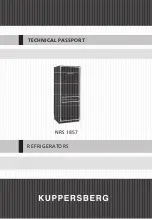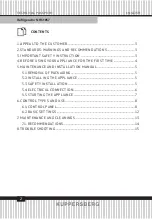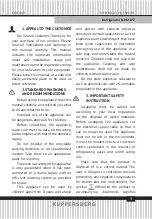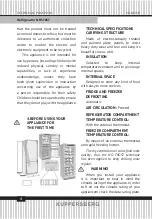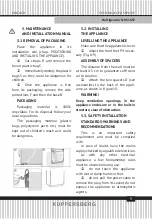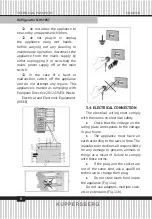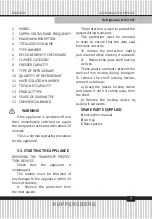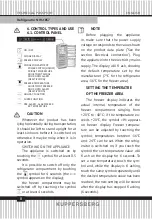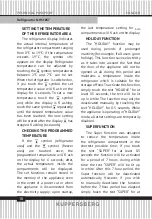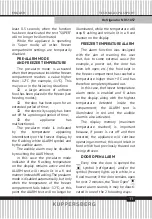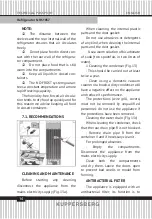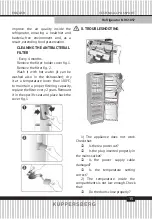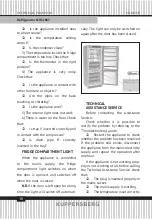
14
TEchnical passporT
English
refrigerator nrs 1857
NOTE:
Â
 Â
The distance between the
shelves and the rear internal wall of the
refrigerator ensures that air circulates
freely.
Â
 Â
Do not place food in direct con-
tact with the rear wall of the refrigera-
tor compartment.
Â
 Â
Do not place food that is still
warm into the compartments.
Â
 Â
Keep all liquids in closed con-
tainers.
Â
 Â
The NO-FROST system guaran-
tees a constant emperature and a more
rapid freezing capacity.
The humidity-free, forced air circula-
tion tends to dry food up quickly and for
this reason we advise keeping all food
in closed containers.
7.1. RECOMMENDATIONS
When cleaning the internal plastic
parts and the door gasket:
Do not use abrasives or detergents
af any kind, when cleaning the internal
parts and the door gasket.
- Use a warm solution of bicarbonate
of soda (two spoonfuls in two litres of
water).
1 Cleaning the condenser (Fig. 13)
- This should be carried out at least
twice a year.
- Clean using a domestic vacuum
cleaner or a brush. A dirty condenser will
have a negative effect on the appliance
and reduce its performance.
The protections (wire grill, covers)
must not be removed by unqualifi ed
personnel: do not use the appliance if
the protections have been removed.
Cleaning the water drain (Fig. 13c)
When cleaning the condenser, check
that the rear drain pipe R is not blocked.
- Remove drain pipe R from the
container V and if necessary clean it.
For prolonged absences
- Empty the compartments.
Disconnect the appliance from the
mains electricity supply.
Clean both the compartments
and dry them. Leave the doors open
to prevent bad smells or mould from
forming.
ANTIBACTERIAL FILTER
The appliance is equipped with an
antibacterial fi lter; its function is to
CLEANING AND MAINTENANCE
Before starting any cleaning,
disconnect the appliance from the
mains electricity supply (Fig. 13a).

